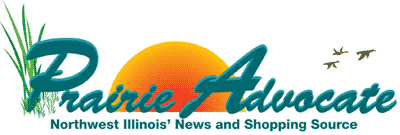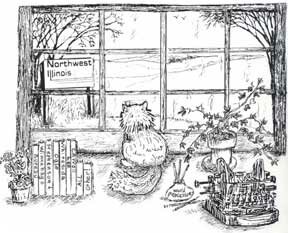Discover rewarding casino experiences. 
|
Coffee, too, was entering into popularity. Civil War veterans were given a ration of coffee to make their own as well as cook for themselves in that period. They had come to enjoy the soothing and stimulating effects of the hot beverage and wanted it when they returned home. The hometown country store was hard-pressed at first to fill orders as fast as requested ... And to have the implements to prepare the coffee beans. Roasters and grinders did become a part of the inventory of the general store. Beans, you see, came green as harvested and had to be “cooked” before the fine little seeds of the coffee tree were ground. In the home, roasting was usually done in the frying pan. Individual coffee grinders of many designs could be found in every kitchen. Oh, was that coffee fresh, although a pot of it might set on the back of the coal range all day for a stronger taste when night came. Caleb Chase and James Sanborn spurred the prepackaging of coffee by roasting their blend of beans so the brand would be uniform each time used. It did save on time especially for the grocer and the housewife. And the package with their trade name “Chase and Sanborn,” on it advertised in the home, too. By 1870 there were only 170 trademarks registered with the government, a surprising number. But things in that section were about to change, rapidly. “Babbitt’s Lye” and “Burnett’s Vanilla” broadcast their names on their container as early as 1855 and 1845, examples of the few trade names shoppers recognized at the time. Most store products before the Civil War were sold in bulk, weighed out in the store, sometimes ahead of time but often on demand. Of course, it depended on the product. “Fletcher’s Castoria” sold in a bottle could have the name molded into the glass. “None-Such Mince Meat” sold in a glass jar had a paper label pasted on the side.
Although pre-roasted coffee became the norm, the grocer could feel a little sadness by the fact that in the roasting a pound of coffee could shrink as much as 16% so he’d have to add to. Pre-roasted and bagged he did not have that to be concerned about. The merchant, however, liked the coffee grinder still because the coffee served as a disinfectant and odor remover. Coffee is sensitive to its surrounds. Coffee does bring people together. Legend has it that coffee was “discovered” about 850 A.D. by a goatherd named Kaldi in remote Ethiopia (Abyssinia) who observed his flock cavorting merrily about the pasture which was surrounded by a certain tree. They’d eat on the bright green leaves in which red cherry-like fruit was growing. He sampled the “cherries” and suddenly he, too, was stimulated and gaily danced amongst the stand of trees and decided he should broadcast the wonderful effects of eating those red fruits. The province in which the goats and their flock master lived was Kaffa. Take it from there! As the beans were carried ever onward to far distant places it would be explained it was from Kaffa, or garbled into similar pronunciations until today in Poland it is Kava; in French, Spanish and Portugal it is Café; Ke-hi in Japan. In Russia it is Kop-he, Santo Domingo, Hawaii, and so on. All very much alike throughout the world. It is believed to have been taken first to Arabia by trade routes and put into cultivation. The Arabians began brewing it and it rapidly became a popular beverage. Too popular, because the Muslim priests ordered it banned (except, by the way, for religious rituals!) but the citizens felt so good drinking it they defied the emirs and spread the word. It was throughout Europe by the 16th and 17th centuries where everyone drank it without punishment who could afford it. After all, it had to be imported from the remotes of Arabia and Africa where there were higher altitudes and warm climates. When it reached the Continent and Britain, coffee houses sprang up that became the meeting places of politicians, the literary and financial people. You’ve heard of Lloyd’s of London as an important “stock exchange.” It began as a coffee house. The first however opened in 1652, “St. Michael’s Alley” in Cornhill. A poster advertising coffee in 1652 is now in the British Museum. As the colonies, america, grew, coffeehouses sprang up there also in Philadelphia, New York and Boston in which in 1670 the first coffee license was sold to a Dorothy Jones. That didn’t mean coffee was the common drink. It certainly was expensive having to brought all across the Atlantic and Pacific in big casks. (Traditionally, coffee was carried in woven grass mats in certain weights, there was little variation except port-to-port. Sometimes the port named the coffee.) One coffeehouse owner wrote “Coffee quickens the spirit and makes the heart lightsome.” Tea was still the everyday drink of the common man. When more taxation was placed on tea without the colonies having representation in government, the Boston Tea Party occurred. Dumping tea into Boston Harbor was the last straw. It might bring their cause to the attention of King and Parliament. They wouldn’t drink tea. And that’s how Americans became coffee drinkers. They tried many wild plants for beverages ... Dried roots, leaves and so forth, Chicory being the most commonly used. It was so for some years. Chicory roots were dried, ground into fine powder and then formed into bean-like shapes to be as, you guessed it, coffee. The color was achieved by some chemical dying. Sometimes also the chicory was added to genuine coffee beans, adulterating it in the way of the grocery trades. But then many products were consistently adulterated; sugar being most often “added to” — with sand. Dairymen might add flour to thicken cream or water down milk or put chalk to whiten it. Coffee could be “bulked up” with “grain wastes,” crushed nuts or shells or both, dust and even floor sweepings ... Pre-packaging might have been long overdue. The then province of Yemen in southern Arabia was the largest producer of coffee. The supply of coffee didn’t match the demand. And it was in a remote place. Tree plantations were needed. In about 1658 sprouts of the shrub-like tree were taken to Ceylon; then to Java and the Netherlands’ East Indies in 1696. Coffee trees can grow to thirty feet high but if picked by hand, fifteen feet is the limit. Altitude and sun are factors in the tree’s growth, the higher the altitude the milder the coffee. There are two types of coffee that are used for commercial sale— arabica and robusta, the former being the better flavored kind. Robusta, however is used more often commercially. There’s a third species but hardly used on the market. Each tree site produces different tasting coffees so blends can vary widely. The 1886 issue of “Grocer’s Hand Book” gives a dozen pages over to the sale and care of coffee. It absorbs odors so it should be kept in closed containers. But it was a good disinfectant in the old time stores to overcome the barrels of kerosene or rotting onions in the bin. AND the rank aroma of groups of geezers and Civil War veterans gathered around the coal-fired heating stove. Long after the merchant had quit roasting and grinding his coffee he used coffee just to deodorize the store! The 1886 Hand Book and other reference are heavy on the romance of coffee. The names of the sites of its production alone hint at adventure and exotic imagery ... Maracaibo, Sumatra, Gold Coast, Madagascar Samangoes, Padang, Singapore and more. Many stories surrounded coffee, one being about a French naval officer, Gabriel de Clieu, on leave in Paris where he heard that the Dutch had transported coffee trees to the East Indies and were quite successful in growing the berries. He became enraptured with coffee and was able to procure a sprout from the hot houses of King Louis XV to take back to Martinque where he lived. The months and more long journey in the 1720’s was arduous and water scarce. But his journal told of his sharing his meager supply of water with the coffee sprout. They both arrived safely and in 1777, three years after his death, there were said to be 19,000,000 coffee trees in the Caribbean if you can believe that. Most of the descendants of the coffee tree there today came from one tiny sprout. Another fellow enamored of coffee was Joel Cheek who in the mid-to-late nineteenth century rafted down the Cumberland River to Nashville to find work. He got a job selling for a wholesale house, coffee becoming his favorite product, he working in his spare time blending, experimenting with roasting, grinding until it almost mesmerized him. He quit his job to work with coffee full time. He urged the finest hotel in Nashville in the South really to serve his blend. It became the talk of the town and Maxwell House became the destination of travelers and residents. Years later Theodore Roosevelt visiting the Hermitage, Andrew Jackson’s home, stopped by and was served coffee. Asking if he’d like more of the Maxwell House’s coffee, he heartily replied, “Dee-lighted! It’s good to the last drop.” Thus was born a brand name and slogan, used yet today. There are so many interesting stories and facts about coffee that we could go on and on but won’t. You wouldn’t have time to go out for a cuppa joe, meet friends to chat of the problems of the world and settle them. Or have a laugh or two. Maybe another time. The illustrations with this are taken from the 1886 Grocer’s Hand Book. The drawing of the coffee plant in color show the glossy dark green leaves and the “Cherries,” as they were called in the trade, pretty dark red, more elongated than round like the cherry. If let grow like a shrub the foliage grow thickly from the ground or if pruned is like a tree with the cover umbrella-like. Kinds of coffee are many, often named for the port from which they are sent, Male Berry Java just one of them. It was mixed with other types to sell with the suggestion of just what it can do without a prescription from the doctor! Brazil has been the world’s largest coffee producer for over a hundred years. The United States the largest consumer and where coffee has enjoyed a resurgence of popularity with brands and flavors sought out by “specialists” everywhere. Enjoy!
|







